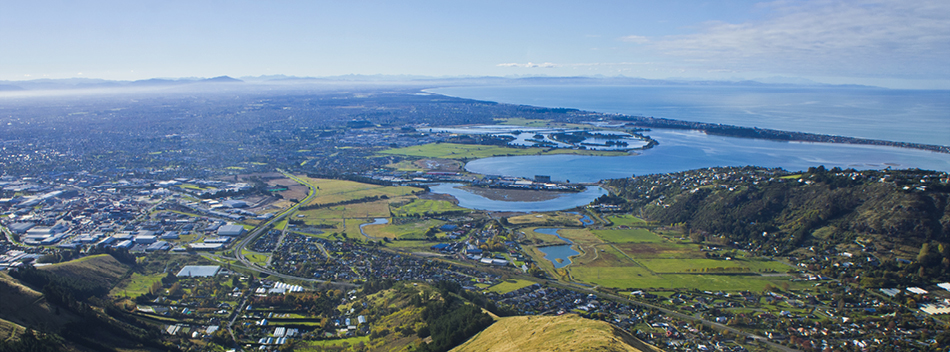In April 2013, EQC released two guides for settlement of earthquake land claims (flat land and hill properties), together with sample Land Settlement Packs. The Guides note that they are a summary of EQC’s obligations and that the provisions of the EQC Act 1993 will be “applied by EQC at all times.”
This article looks at what cover the EQC Act actually provides for “land damage” and what qualifies as “land damage”. In Part II to come, we will look at what are EQC’s obligations/rights in respect of settling land claims.
1. What general cover is provided under the EQC Act for earthquake related land damage?
2. Is EQC responsible for covering all areas of a property where there is land damage?
3. What level of “insurance” cover does EQC provide for land damage?
4. What qualifies as “physical loss or damage”?
5. What types of “physical loss or damage” does EQC cover?
1. What general cover is provided under the EQC Act for earthquake related land damage?
The EQC Act provides that, where a home is insured against “natural disaster damage”, the land on which the home is situated is insured against:
- any “physical loss or damage” to the land occurring as a direct result of a natural disaster (such as an earthquake); and
- Any “physical loss or damage” to the land occurring as a direct result of measures taken under property authority to avoid the spreading of, or otherwise reduce the consequences of, any natural disaster (e.g. land works necessary to redirect flood run-off).
2. Is EQC responsible for covering all areas of a property where there is land damage?
No, EQC only covers damage to the following areas of land:
a) the land under the house;
b) all land within 8m (extending outwards) of the house or outbuildings such as any garage (but excluding artificial surfaces such as asphalt or concrete);
c) the main access way to the house (excluding coverings such as asphalt or concrete) from the boundary of the land (so long as that access way is situated within 60m of the house);
d) the land supporting the main access way;
e) bridges and culverts situated within the above areas; and
f) retaining walls and their support systems within 60m of the house which are necessary for the support or protection of certain specified areas of land (e.g. the house or garage).
EQC does not cover certain things that are on the land, such as trees, plants, lawn, paving and driveways.
3. What level of “insurance” cover does EQC provide for land damage?
Qualifying properties are insured for an amount equal to the lowest of the value of:
a) a parcel of land that is the minimum lot size under your district plan.
i. In Christchurch, if your property is zoned as Living Zone 1, the minimum lot size is 450m2.
ii. If your property is in Christchurch’s Living Zone 2, the minimum lot size is 330m2.
b) An area of land of 4000 m2; or
c) The area of land that is actually physically lost or damaged.
These values are the maximum amounts EQC could be liable to pay, rather than what you will automatically receive from EQC.
In the case of bridges and culvert and retaining walls, EQC is only liable to pay up to the “indemnity value”of that property (e.g. this is often described as the property’s “market value” at the date of the loss or the property’s value allowing for its age and condition immediately before the loss or damage happened).
EQC advises that payment of claims for land (where EQC considers its maximum liability has been reached) will be based on a professional valuation.
In each case, EQC’s excess is deducted off each land claim (if the claim is $5,000 or less, EQC will deduct an excess of $500. If the claim is more than $5,000, EQC will deduct 10% of the claim up to a maximum of $5,000 per claim).
4. What qualifies as “physical loss or damage” in the context of “natural disaster damage”?
This is not defined in the EQC Act.
In the case of Earthquake Commission v Insurance Council of New Zealand Incorporated & Orrs [2014] NZHC 3138, the Court held that, for land damage to qualify as “natural disaster damage” for the purposes of the EQC Act, there must be:
- a physical change or loss to the land that has occurred or is imminent as a direct result of the earthquake. Put another way, some type of disturbance or loss to the physical integrity of the land; and
- which adversely affects the uses or amenities that could otherwise be associated with the land (i.e. building on it/habitating on it).
5. What types of “physical loss or damage” does EQC cover?
This is again not specified in the Act. EQC has however identified nine types of land damage on the flat residential land in Canterbury. Seven are said to be apparent from looking at the land:
- Cracking caused by the sideways movement of land, often towards water;
- Cracking caused by backwards and forwards ground movement;
- Undulating land (e.g. uneven settlement of the land, often as a result of sand and silt being pushed up or settlement of liquefied soils below the ground);
- Ponding (due to lowering of the land in areas which results in water “ponding” in places where previously it did not);
- Localised settlement resulting in drainage issues (e.g. drains flowing the wrong way due to land settlement;
- Groundwater springs (new springs flowing over the ground where previously they did not); and
- Pushed up sand and silt, either under a house or over a large area.
Two further types are not necessarily visible but have increased the future vulnerability of the land to liquefaction or flooding:
- increased liquefaction risk (the ground surface has subsided closer to the water table than previously, reducing the ground crust thickness and therefore increasing the risk of liquefaction occurring); and
- increased flooding vulnerability (the ground surface has again subsided making it more at risk of flooding if the land is situated near a water way).
In the case of Earthquake Commission v Insurance Council of New Zealand (referred to above) however the Court held that “circumstances where one or more earthquakes have caused physical changes to the land only and such changes have caused the residential building to reduce in height and adversely affected the uses and amenities that could otherwise be associated with the residential building by increasing its vulnerability to flooding events does not include “Natural disaster damage” (emphasis ours).
EQC advises that it assesses Increased RIsk of Flood/Liquefaction utilising drilling data, aerial laser levels taken after each major earthquake/aftershock which record changes in land elevation, and Water Table Levels.
In the Port Hills, EQC has identified other types of damage such as:
-
- Debris material (e.g. rock fall and cliff collapse) being deposited on the land where this materially affects the physical use of the land;
- Land cracking/bulging/undulations and loss of land as a result of land moving vertically and/or horizontally downslope where the land no longer occupies the space it did before the earthquakes, where this materially affects the physical use of the land.
- Land damage as a result of impacts from rock fall and cliff collapse.
This post provides a general outline of what the EQC Act provides for “land damage” and what qualifies as“land damage”. In Part II to come, we will look at what are EQC’s obligations/rights in respect of settling land claims.
If we can assist in any way with your land claim, please don’t hesitate to contact Paul Cowey at paulcowey@parryfield.com.
Disclaimer: the content of this article is general in nature and not intended as a substitute for specific professional advice on any matter and should not be relied upon for that purpose.




